by Julia Friedman
I am writing this on October 1, 2020. It has been exactly ten days since the National Gallery of Art website posted a joint “Statement from the Directors” of the NGA, Boston MFA, Tate Modern and Houston MFA—the four venues where the long-awaited “Philip Guston Now” retrospective was to open this summer, announcing its delay until 2024.
The delay was caused by concerns about two dozen images from the late 1960s and early 1970s (among nearly 200 works in the exhibition) which evoke imagery of the Ku Klux Klan through cartoonish depictions of hooded figures. The newspeak phrasing of the statement, with its references to “the powerful message of social and racial justice,” the necessity of reframing, and “bring[ing] in additional perspectives and voices” naturally lent itself to accusations of cowardice and of a patronizing attitude on the part of the Directors. An opinion split became clear almost immediately, as The New York Times and The Art Newspaper followed up the announcement with articles containing quotes from the exhibition curators, Guston’s daughter Musa Mayer (who heads the Philip Guston Foundation), and art historians who have published articles and books on the painter. As of yesterday, opponents of the postponement began circulating an open letter demanding that “Philip Guston Now” should be restored to the museums’ schedules, and by this morning the letter had over one thousand signatures.
My first impression was that it was just another of the now increasingly frequent instances of moral panic gone too far. Weary of potential accusations that the subject matter of the paintings implicated the artist as a racist, the directors judiciously (or spinelessly) spared themselves the trouble of entering into a dialogue to protect the art they chose to show. Except this time it was different. First, the decision to pull the plug on the retrospective in its present form was taken preemptively, making it a clear instance of self-censorship. Second, the decision was taken by the administrators, with the support of the board members (the NGA Board of Trustees were said to have been in favor of the directors’ initiative), overriding the objections from the curators and scholars involved in the project. Far from being a unanimous gesture of good will, as the Statement from the Directors seemed to suggest, the postponement of the show could better be described as an act of sabotage from within the organization. Darren Walker, one of the NGA trustees and the president of the philanthropic Ford Foundation said the quiet part out loud, when he stated that it was not the painter’s actual social stance that mattered, but the failure to consider potential trauma to the viewers: “What those who criticize this decision do not understand, is that in the past few months the context in the U.S. has fundamentally, profoundly changed on issues of incendiary and toxic racist imagery in art, regardless of the virtue or intention of the artist who created it.” Considered from this angle, the exhibition organizers were guilty of not protecting the viewers, of not thinking first and foremost about the pain they might feel, thus negligently exposing the vulnerable by exposing them to “incendiary and toxic racist imagery.”
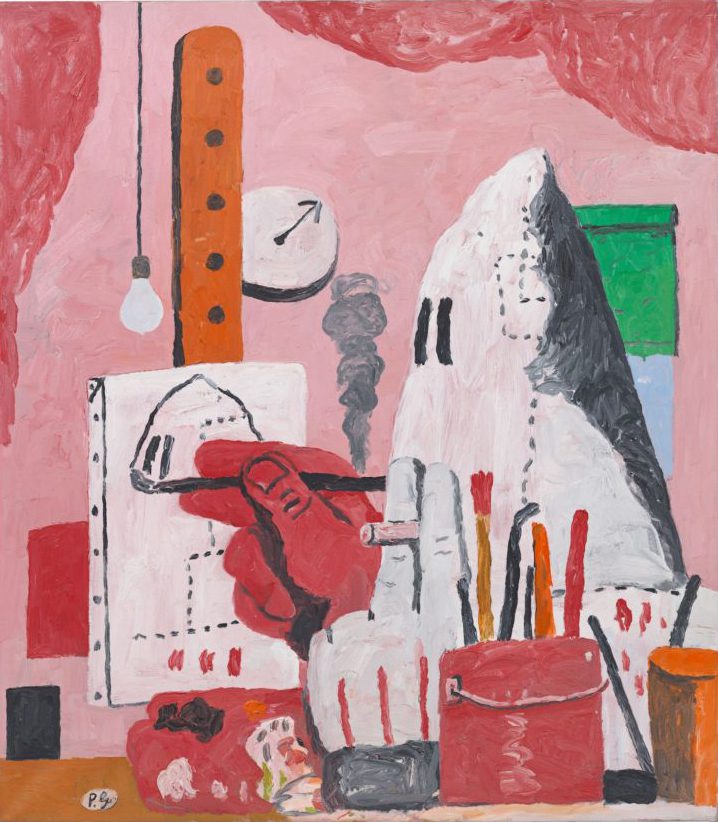
Despite what the Statement from the Directors implied, the curators who put together the retrospective had already done their job of interpreting and contextualizing the contentious imagery in the exhibition’s impressive 266-page catalogue. Bizarrely enough, it appears that going into this project, the directors had been keenly aware of the need to exhibit Guston’s work now because it is “profoundly informed by historical contexts and [displays] a willingness to engage explicitly with the past.” The Directors’ Foreword also assures us that they “endeavor to show that many of the issues he carried through into his last works were framed in his earliest work, albeit with different means and a different pictorial language: the exploration of social injustice, the anxieties of personal conviction, and the relation of the individual to norms and conventions.” The Curators’ Preface is even more explicit in its argument for the urgency of the retrospective: “Another [answer to the question of why exhibit Guston now] would have to do with the connection between past and present, for today in the United States and across Europe we find ourselves embroiled once again in the kind of culture wars that defined the 1960s, facing levels of racism, violence, and polarization that we have not seen for fifty years.” These statements are clearly at odds with the notion that the potentially controversial work has not been given its due consideration in light of the recent escalation of culture wars.
Perhaps it was the lack of scholarly rigor on the part of the curators who failed to prove definitively that Guston was not a racist? That is not the case either. Harry Cooper, the NGA curator, and the author of the most substantial contribution to the exhibition catalogue, opens with a key fact of Guston’s biography. In the second paragraph of his essay Cooper brings up “the shock of being around Klan rallies and strikebreaking as a Jewish kid growing up in Los Angeles in the 1920s, memories of which must have been brought back by news of Klan bombings and murders of 1960s.” A few pages later, in the section tellingly subtitled “Cossacks, Catastrophes, Klansmen,” Cooper tells us about then teenage Guston, who in 1932, along with his friends Reuben Kadish and Murray Hantman, painted murals for the local branch of the communist John Reed Club on the assigned theme of “Negro America.” The subject chosen by the friends dealt with the notorious case of the Scottsboro Boys, nine black youths between the ages of 13 and 19 who were falsely accused of raping two white women the previous year. All but the youngest of these nine teenagers, were placed on death row at the time Guston painted his mural, which depicted the whipping of a tied-up black man by a hooded Klansman.
Cooper cites Guston’s recollections of what happened next: “Early one morning a band of raiders…led by the chief of the Red Squad (a unit of the Los Angeles Police Department that went after Communists and strikers) …entered the John Reed Club brandishing lead pipes and guns. They totally destroyed several murals…” According to Guston, this early event was instrumental in his return to Klansmen imagery in the late 60s: “I was painting common objects and so on, and the Democratic Convention took place, in 1968, and like everybody else I was very disturbed about it. It seemed to connect with way back in the ‘30s when I was just beginning to paint… The Klan was very powerful in L.A. in those years.” Cooper concurs:
It all makes a certain kind of sense: the spectacle of the Chicago police attacking civilians engaging in politics triggered Guston’s memory of the LAPD attacking his teenage anti-Klan mural. […] Guston, probably without fully realizing it, was living out a culture war in real time in the terms that meant most to him, the polarities of abstraction and figuration, aesthetics and politics, art and the world.
And if all this still does not explain why Guston chose to represent a hooded Klansman at an easel in his 1969 painting curtly titled The Studio, Cooper reveals another pivotal detail about one of Guston’s intellectual influences: his love for the work of the early Soviet writer and journalist Isaac Babel. (One of Cooper’s footnotes lists a translation of Babel’s collected works among the books in Guston’s personal library.) Babel, a Russian Jew, joined the Bolshevik Party following the October Revolution of 1917, and in 1920 was assigned as an army commander to the 1st Cavalry Army. He described the violence and marauding of the Red Cossacks in his diary Konarmeyskiy Dnevnik 1920 goda, which later was reworked into a book of short stories under the title Red Calvary.
As you read Babel’s first-hand account of the Cossacks’ casual cruelty against the Jewish population, it is hard to make sense of the Jewish narrator joining the Cossacks, because the Cossacks terrorized and murdered Eastern European Jews for hundreds of years. The so-called Cossack riots of the mid-17th century were pogroms against the Jews of modern Ukraine, in which upwards of 20,000 people were murdered. Had Leib Goldstein, Guston’s father, not migrated to Montreal in 1904, to be followed by his wife Rachel and their four children in 1905, that family too could have become yet another statistic, and Philip Guston would have never been born.
Guston, whose parents were of Babel’s generation, and who like Babel came from Odessa, felt an affinity with the writer. Both were the subject to the “anguished sense of alternatives,” which, the art critic Dore Ashton perceptively noted, was a projection that Guston applied in his own writings about the artist Bradley Walker Tomlin. Ashton’s observation that Guston “is given to extravagant pursuit of paradox,” and Guston’s admission that he is “a creature of dialogue; everything in me is conflicting and contradictory,” cohere with the painter’s explanation of Klansmen references: “The idea of evil fascinated me, and rather like Isaac Babel, who had joined the Cossacks, lived with them, and written stories about them, I almost tried to imagine that I was living with the Klan. What would it be like to be evil? To plan and plot.” Writing in 1960, almost a decade before the contentious paintings, Ashton zeroes in on the reason that “the artist exposes himself to all his past contradictions”; he does so to ensure that the “anguished sense of alternatives…has been transformed into a positive force.” It is telling that among ten contributions to the catalogue by contemporary artists whose work has been influenced by Guston, three dealt specifically with the “sensitive” references. Two of these were penned by African American artists— Trenton Doyle Hancock and Glenn Ligon, who, far from being offended by Guston’s allusions to the KKK, found them redemptive and even “woke.”
Hancock, in his discussion of Guston’s imprint on his own work, explained Guston’s Klan imagery as a “reengage[ment] of historical symbols.” He saw the painter’s use of the imagery as a ritual cleansing of the symbols that cloaked hatred beneath the religious tropes that reoccurred in Renaissance and Baroque paintings Guston admired: “Guston often spoke of ‘ghosts’ in the studio, voices of predecessors requiring exorcism. At some point you have to stop the chase and confront those voices.” Hancock reiterated his support for the show in September 25 interview with the New York Times, where he stated that Guston’s white-hooded figures were a way of “implicating America, the New York art world and himself in a system that celebrates the horrors of white supremacy.”
Ligon’s contribution to the catalogue is a short but powerful article with a well-chosen double entendre title—“In the Hood,” where he lays out his unequivocal support for the painter. I include a protracted quote below, because it is so good:
Guston, unable to continue going to the studio ‘to adjust a red to a blue,’ made a precipitous move from abstraction to figuration in order to explore issues of domestic terrorism, white hegemony, and white complicity. At the time, paintings such as The Studio (1969), The Painter (1969), and Bad Habits (1970) were considered a betrayal not just of New York school abstraction but of the idea that living in a country built on white supremacy could leave one unmarked; that it didn’t splatter or stain, or that there were clear distinctions to be made between those who upheld notions of racial superiority and those who did not. … To be ‘in the hood’ was a solution to a problem, one that enabled Guston to break from the elevated critical discourse surrounding postwar abstraction and dive into the muck and mire of the American experience, allowing him to tell the truth of what it meant to be a citizen reckoning with a particularly turbulent moment in the nation’s history. The comedian George Carlin once said, ‘The reason they call it the “American Dream” is because you have to be asleep to believe in it.’ Guston’s ‘hood’ paintings, with their ambiguous narratives and incendiary subject matter, are not asleep—they are woke.
This begs the question: Why didn’t the museums’ administration publicize this full-on rebuttal by a respected African-American artist, who has built his career on often discomforting explorations around the issues of white supremacy, to anyone who would dare to accuse Philip Guston of racism? At the time the Statement from the Directors was posted, Ligon’s text was already printed in the catalogue, in a neat single-page layout that would have been perfect for reproduction online. Surely, this would have been a far better way of addressing possible objections, than to scrap a major exhibition of a major artist that had been years in the making. The catalogue, with its curators’ essays and artists’ contributions, provides plenty of historical background as well as solid evidence of Guston’s unambiguous ideological stance in opposition to the KKK. It even contextualizes the paintings within today’s epistemology of wokeness. What else is there? Why retract the show preemptively?
After reading the exhibition catalogue, and having learned a few details about how this fateful decision was made, I am convinced that the reasons for the delay cited in the Statement from the Directors, such as the need for extra time so “that the powerful message of social and racial justice that is at the center of Philip Guston’s work can be more clearly interpreted,” or that “it is necessary to reframe our programming and, in this case, step back, and bring in additional perspectives and voices to shape how we present Guston’s work to our public” are the equivalent of an ideological Trojan Horse—a shell meant to be smuggled into the institution of the museum to fundamentally change its operational principles. Inside that shell is a paradigm-shifting partiality towards “impact” over “intent.” Darren Walker’s statement quoted above expresses that very idea: any artwork that can be considered “toxic” or “racist” in its impact will disqualify it from public display, and no amount of scholarly curatorial commentary based on facts and statements by the painter, or sincere and powerful testimonials from their colleagues—even if they happen to be prominent African American artists who assure us that the art is indeed “woke”—will redeem the offending material. The judgement of whether to include or to exclude the work could then only be based on the worst possible interpretation by the most sensitive and offense-prone person in the room.
If considerations of “impact” supersede considerations of merit in the choice of the art, then the Directors were absolutely right to halt the show because some of the work, according to the “impact” argument, is unpalatable for consumption within a culture that prioritizes viewers’ emotional safety. But should the argument that is at the base of the “Philip Guston Now” postponement become a precedent, then art museums will be transformed into consciousness-raising platforms where ideological considerations will overtake aesthetics and art history. This path had already been trodden by the infamous 1937 Degenerate Art exhibition mounted in Munich, where the public was “educated” on the art of modernist decay, with the help of derogatory wall texts aimed to reveal the ideological misdeeds of the painters who dared to distort color and human form. That exhibition was built on the premise that modernist art was harmful to the spirit and body of the German people. Its potential harmful impact was to be mitigated with the proper ideological framing of the offending artwork.
Today’s art world is at a crossroads: if we are to accept the “impact” argument, and to prioritize the overprotecting of museum visitors over educating them, then we will be complicit in tearing down whole swaths of culture because of their anachronistic dissonances with the edicts of Critical Race Theory, and the endlessly shifting norms of what might be deemed offensive. Or, we can push back and insist on that artistic merit should be the guiding principle for the choice of exhibitions. I fervently hope that the open letter to reinstate the Guston retrospective prevails, and that this ship can be turned around. But to prevent this from ever happening again, museums need to be safe from the culture of “safetyism,” as it was defined by Georg Lukianoff and Jonathan Haidt in their 2018 book The Coddling of the American Mind. Speaking about the rise of the phenomenon on American college campuses, Haidt and Lukianoff defined safetyism as “a culture or belief system in which safety has become a sacred value,” the imperative at the expense of any other practical and moral concerns. Its integral aspect is the concept of microaggression, which “reveals a crucial moral change on campus: the shift from ‘intent’ to ‘impact’ [and] some activists say bigotry is only about impact (as they define impact): intent is not even necessary.” When “a member of an identity group feels offended or oppressed by the action of another person, then according to the impact-versus-intent paradigm, that other person is guilty of an act of bigotry.” The authors pessimistically conclude that “in today’s culture of safetyism, intent no longer matters; only perceived impact does, and thanks to concept creep, just about anything can be perceived as having a harmful—even violent—impact on vulnerable groups.” Even a political cri de coeur of a Jewish painter whose anti-racist mural was destroyed by the LAPD Red Squad.
It seems to me that the situation with the postponed retrospective is a variant of what is described in The Coddling of the American Mind. In the environment where “safety trumps everything else,” Guston’s two dozen images with their representations or intimations of Klansmen, on the face of it are nothing but, as Darren Walker put it, “incendiary and toxic racist imagery in art.” Considering this, they should be purged from public view to ensure viewers’ emotional safety. As Haidt and Lukianoff put it: “retraction is the new rebuttal.”
Update:
It has been one month since I wrote this article—enough time for three important developments in the case to take place. First, the Director of the National Gallery, Kaywin Feldman, did a podcast interview with Hypoallergic defending the decision to postpone the retrospective so that it could be reconceptualized and reworked with an African-American curator on the team. The new version would also incorporate the feedback from the POC non-curatorial employees of the museum, to ensure that the exhibition reflects their “voices.” Feldman did not address even the possibility of the museum providing available educational materials for their staff to assuage any possible concerns about sensitive topics—as if the already ongoing discussion of these topics in the exhibition catalogue never happened.
In the meantime, the number of artists, critics and curators who signed the Brooklyn Rail open letter demanding that the postponement decision be reversed grew to over 2,600 signatories. Numerous publications, including The Washington Post, Wall Street Journal, The Nation, and The Times UK, published articles and op-eds that highlighted the absurdity of NGA’s decision to postpone. The Philip Guston Foundation website, which archives all the relevant publications, lists over three dozen contributions on the matter of the postponed retrospective. The murmur of disappointment and disapproval might not have been stentorian, but it remained steady.
On October 28th, The Art Newspaper broke the news that Mark Godfrey, a senior curator of international art at the Tate (one of the show’s four venues), was temporarily suspended because he dared to criticize the administration’s decision to postpone the show until 2024 on Instagram. In his post, Godfrey said that postponing the long-awaited retrospective was patronizing to the viewers who were presumed to be unable to navigate the facts themselves (even with the help of the curators and artists who contributed to the exhibition catalogue). It bears pointing out that Godfrey’s contribution is a superb essay on the relationship of Guston’s work to the Jewish tradition. His essay specifically addresses the victimization of American Jews by the Klan. Godfrey’s suspension has a dystopian quality to it—the oppression of free speech that was characteristic of Soviet Bloc regimes and formerly unthinkable in the West. Except that one of his colleagues, who refused to be named for the fear of repercussions, actually used the phrase “toe[ing] the party line” to explain this muzzling of a knowledgeable and candid professional.
The third important development also happened on October 28th, when The New York Times article titled “After Backlash, Philip Guston Retrospective to Open in 2022,” announced that the show was back on the schedule, and not in the projected 2024, but two years sooner. Although The New York Times emphasized the efficacy of the backlash in the title, and reminded readers that the original plan for a four-year delay was due to the “surging racial justice protests across the country” in the body of the article, those behind the postponement refused to acknowledge that the pressure forced them to change course. In a textbook gaslighting move, the National Gallery spokeswoman assured the newspaper that that the backlash in the art world and the press had nothing to do with the new opening date of 2022, and it was the pandemic that caused the retrospective to be delayed! No more mentions of the need to use the show as a vehicle for “the powerful message of social and racial justice,” or to “bring in additional perspectives and voices.” The backlash clearly worked.
This article was originally published at Athenaeum Review.


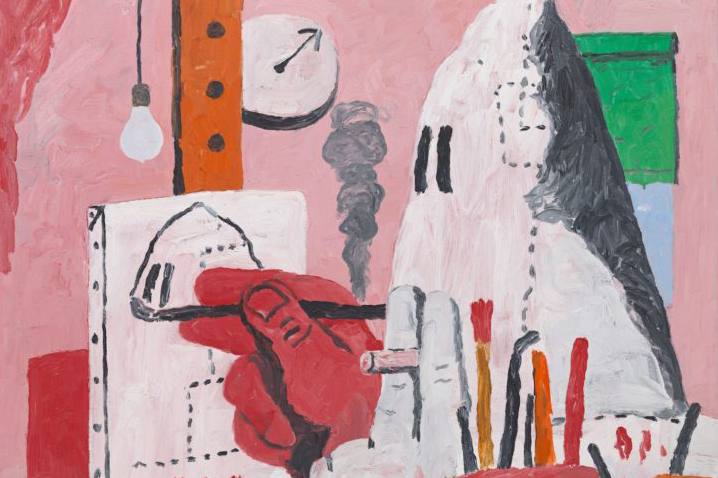

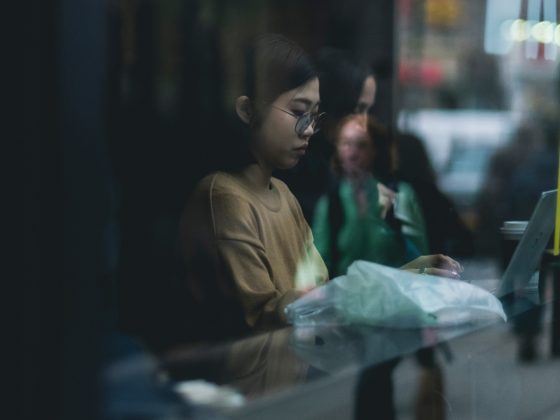
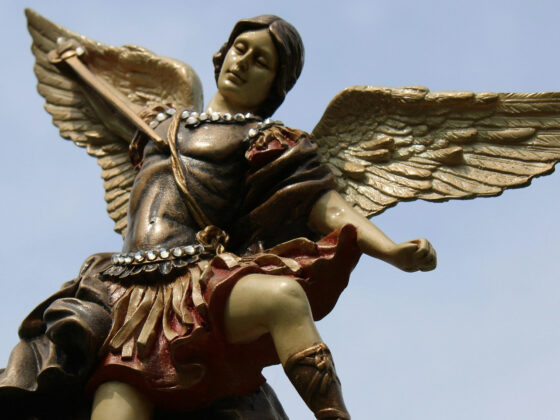
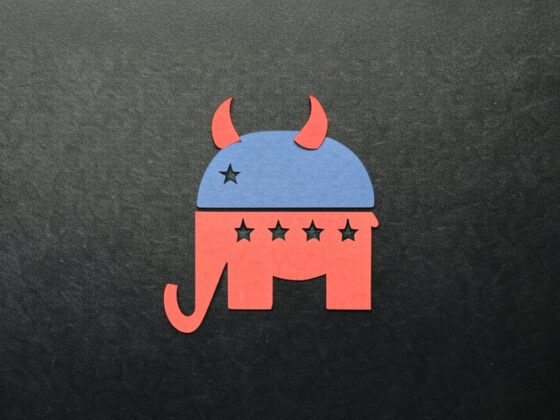
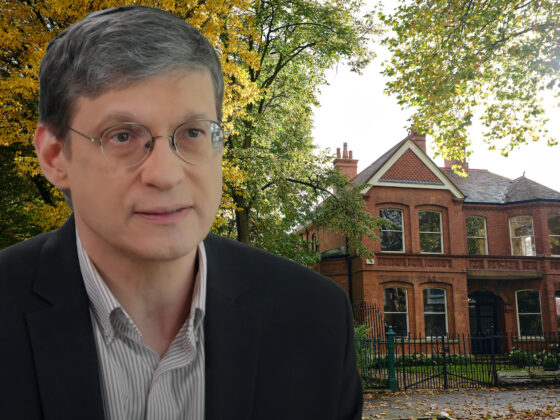
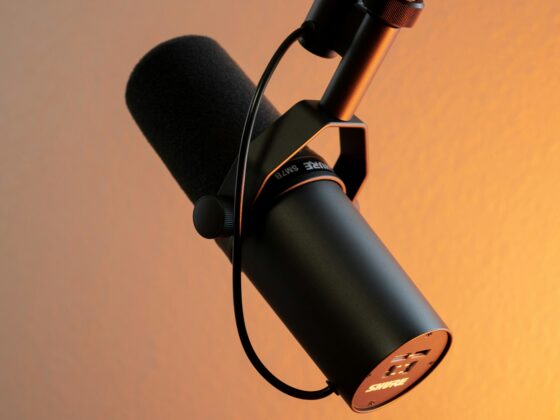
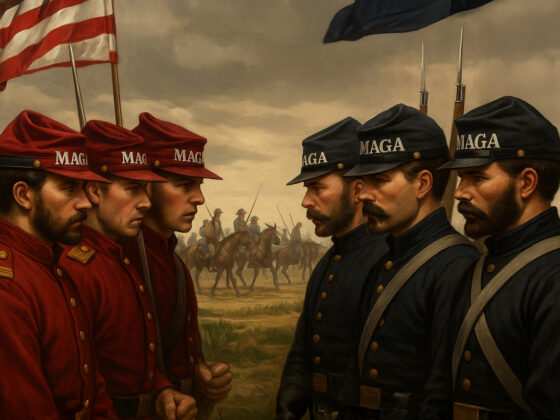



10 comments
Shame on my Tate Modern (AKA The The Mod) here in London!
For me, the only thing that matters is the intention of the artist. Someone getting triggered by a painting needs a psychiatrist. They shouldn’t get to dictate what gets put in a museum, or what the rest of us get to see.
That said, I hate communists and communism and I could see outlawing the display of pro-communist art, and outlaw the teachings of Marx as a desirable political structure. Only anti-communists who escaped Leftist countries should be allowed to teach ABOUT communism and its evils.
It’s all a bit ‘death of the author’ is it not. As with biographies of the contentious on Wikipedia, anybody but the person themself can speak. And if the author of the painting can’t speak, why should the speech of anybody offended be allowed, and not subordinated to interpretation by yet more people?
Looking at the picture itself though, I can’t help seeing it animated, and hearing Felix the Cat whistling from under the hood. So I can appreciate the gallery anticipating some wacky misreadings
Yeah, looks ugly to me, too.
So they call this stuff “woke”. A painting of a Klansman? Who’d’ve thought? I suppose racism is the new anti-racism?
Did Guston spend time with actual Klansmen? It can be tough to do when you’re an outsider, I will grant you. Maybe he didn’t have much luck there. I will admit that if he wasn’t successful, that his work does kinda come across to me as cultural appropriation of white supremacist culture.
What I mean is this: it would be viewed as disrespectful – cultural appropriation – if a white person were to partake in an element of a different race or culture, such as wearing traditional clothing of a different race or ethnic group. So, it would seem to me that the same standard should be applied to this artist – unless, of course, we were to admit that the concept of “cultural appropriation” only applies to certain races or ethnic groups. Of course, if that’s the case, then “cultural appropriation” would be a racist concept.
So, which is it? I’m confused.
But hey, what do I know about fine art? After all, I’m just a white Conservative. ; )
‘When “a member of an identity group feels offended or oppressed by the action of another person, then according to the impact-versus-intent paradigm, that other person is guilty of an act of bigotry.”’
Disparate impact theory is a relative of this belief.
We’re just one step away from claims of offence and oppression caused by the actions of others to claims of offense and oppression caused by the mere EXISTENCE of others (claims of systemic bigotry in all its flavors are a partial step towards that goal). Attempts at Kristallnachts and pogroms will inevitably follow.
Personally, though, I’m saddened by the decision of the museum to move the show up to 2022. I’d be happy if they postponed it to 2124 or even later. Ugly crudely-drawn art that looks like it was made by first-graders wielding crayons on their first day of school should not be praised and glorified, nor should art need reams of interpretive text to explain WTH the artist was trying to say, if anything.
Yep. I’ve read some “reams of interpretive text to explain WTH the artist was trying to say” that was tantamount to a literary act of effrontery that was a much superior level of “art” than the “art piece” it was meant to describe!
gmmayo70-
Classical liberals (conservatives/libertarians) need to organize on a national level and have local chapters. It’s not too late to openly dissent.
Trump struck a chord in at least half of the country-those who are fed up by being told they are horrible people and sick of being bossed around by somebody else. Most people are perfectly capable of making their own life choices themselves.
Maybe you have some ideas about forming a group and advertising it. Please share your thoughts here.
By the way, boycotts seem to work. For example, Target pulled Abagail Schrier’s book on the potential for harm from early childhood gender transitions. People complained and the book magically reappeared on their shelves/online.
Corporations want to make money. They don’t like losing it.
Cal,
I’m not convinced of the effectiveness of boycotts. At some point, it seems to trigger boycott fatigue. People on the Right are fond of repeating “Get Woke, Go Broke!”, but has any company actually gone broke from that? Indeed some of them seem to be circling their wagons together, with some degree of success.
I’m not one to throw the baby out with the bathwater, though; it’s just that boycotts need to be fewer and further between to allow people time to recharge. Boycotts also require coordination – something that is becoming far more difficult light of our increasingly fascist (a term I do not use lightly) tech industry.
And yes, it is long past time to organize. I don’t think most people are aware of just how well-organized the hard Left is. Endless action fueled by boundless energy – that’s how they compensate for the same ideas failing time and again.
Organizing ideas? My current one is what we’re doing on these articles – developing an effective rhetoric and response to counter CSJ. If there is no sales pitch to get your foot in the door, you’ll get locked out. This site serves as a wonderful resource to point people toward, but if you can’t get their attention, what good is it?
As for grassroots organizing, there is abundant literature on the Left. If you want to attract more like-minded people, however, you’re probably not going to find them among the grounds most fertile for Lefties, at least, not as many. You first need a hook – being like-minded isn’t a compelling reason to get a stranger to want to associate with you. Are you forming an NPE? Some other type of organization?
Starting with the Easiest:
And as such the least likely to be much help (but you never know) – look for social media groups in or near your area and get to know some of the members. But at least you can do it from the comfort of your own home. Be sure to look beyond Facebook, and especially to some of the alternatives that are currently expanding rapidly (Parler and MeWe come to mind). Get in touch with more active groups groups on social media that are not necessarily in your area, but might contain some members who are, or know of someone in your area. You can start your own social media group as well to attract people you can’t find on your own. If you get just one person who is ready to commit, you’ve doubled your manpower and your potential reach.
Getting more difficult, look in the political science departments of local colleges or universities for like-minded faculty, oftentimes they’re a little more plugged-in to like-minded people on campus or in the community.
Even harder is digging into voter rolls. It’s public information, and you can get contact info for registered voters. This can get time consuming, but you can get an idea of preferences by party ID (provided you live in a state that registers by affiliation) and develop a contact list from there. This is where it gets uncomfortable, or possibly incurs a cost. You have to get on the phone or send out some mailers, or e-mails. This step might not be feasible until you have some level of organization (but it doesn’t take much).
This is just a super basic, non-comprehensive outline of how you might do it completely on your own without having to rely on someone else’s data or organization.
Politics is the bane of art.
The incorporation of special “interpreters” to “contextualize” art for political reason is indeed the “trojan horse” for putting politics before art. One need only look at the publishing industry’s use of “sensitivity readers” in the editorial process, or Hollywood’s increasing use of the same to see the template that will no doubt come to visual arts, if it hasn’t already.
Hollywood has rather infamously instituted grievance quotas in future works if they are to be considered for future awards. Gone will be any sort of individual artistic initiative in favor of an ever-narrowing list of approved artistic subjects portrayed in the approved fashion. Progress is now harking back to mid-twentieth century committee-approved art in the Soviet bloc.
The backlash cannot stop.
The tendency of those who are upholding the principles of a pluralistic liberal democracy is to play defense, while the radicals play only offense. Until the former figures out how to get their offense on the field, we’ll continue to lose.
This piece from Spiked fits nicely here: https://www.spiked-online.com/2020/11/30/now-the-decolonise-movement-has-come-for-design/. The number 1.618 (the golden ration) is next in line to be executed.